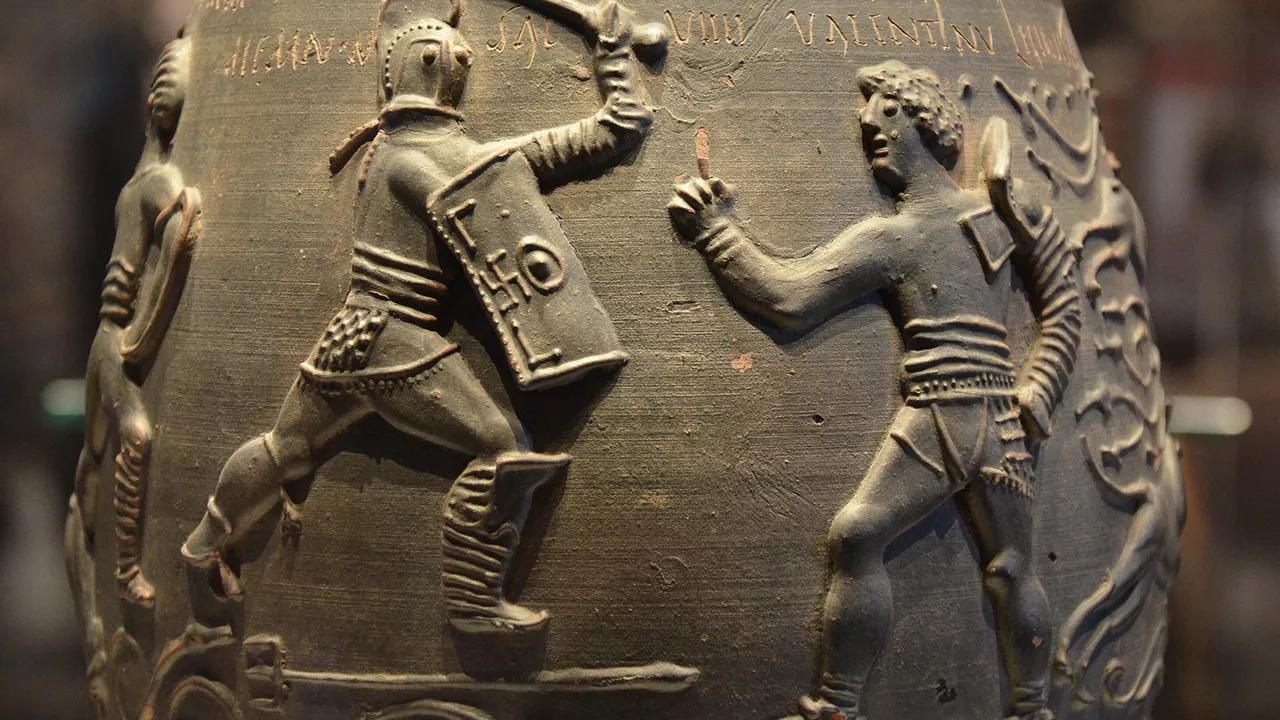Africa-Press – Sierra-Leone. The so-called Colchester Vase was discovered in a Roman tomb at West Lodge in 1853 in the British city of Colchester. The pottery is decorated with elaborate depictions of gladiatorial battles and its final use was as a funerary urn.
Newly surfaced evidence has revealed that gladiator fights were held in ancient Britain in the late second century AD, marking a first for researchers following the discovery of a clay vase containing cremated remains.
Until now, it was unclear to scholars whether the funerary vase was made in Britain or in continental Europe as no previous evidence has survived that the Roman pastime reached the British Isles. At the same time, the high level of artistic craftsmanship with which the Colchester vase was made suggests that it could not have been made in the backyards of the empire.
However, as archaeologist John Pearce of King’s College London and his colleagues established, the clay from which the vessel was molded was of local origin.The researchers concluded the vase was made on the territory of the Roman city of Camulodunum, which existed on the site of today’s Colchester, between 160 and 200 AD. As the results of archaeological excavations show, during this period, Camulodunum was a large prosperous city with an active cultural life and a developed pottery industry.
Analysis showed that the inscriptions had been applied directly to the soft clay, even before firing. This was further confirmation that the vase was made directly in Camulodunum and not brought in from the continent. All this means that there were also gladiatorial fights in Roman Britain.
Three scenes of gladiatorial battles (human-human, human-animal, and animal-animal) are depicted on the outer walls of the 23-centimeter-high vessel, and the names of the fighters are scratched in: Secundus, Mario, Memnon, Valentinus.
Next to the name of Memnon are the initials SAC and the number VIIII, indicating that he fought nine times and survived.
Scientists have suggested the vase was made to commemorate a specific event, that is, it was a sports souvenir, and only then was it turned into a funerary urn.
The researchers determined that the cremated remains belonged to a stout man in his 40s, possibly born outside the British Isles. Pearce and his colleagues believe vase contained the remains of a wealthy “fan” as opposed to a gladiator.
For More News And Analysis About Sierra-Leone Follow Africa-Press






